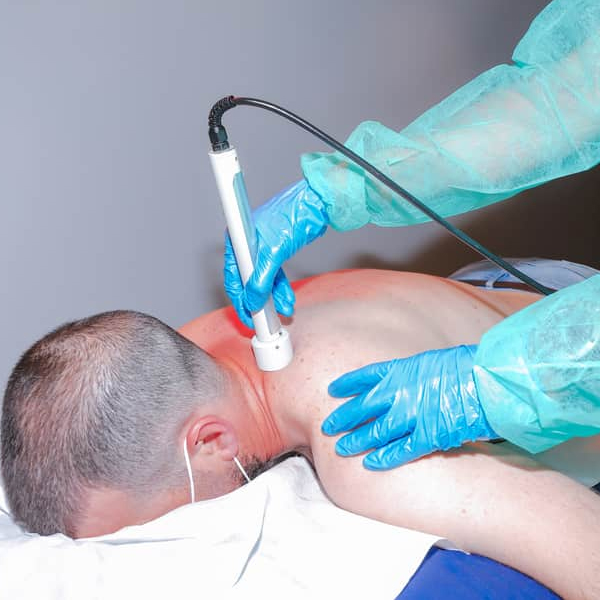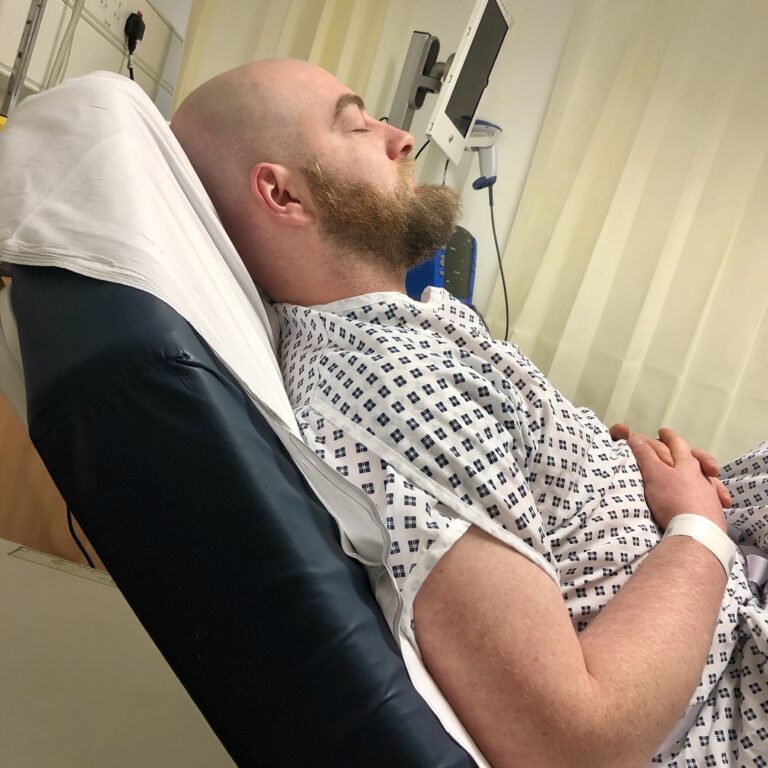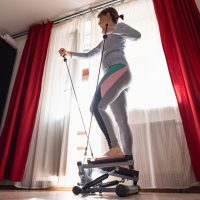Radiofrequency Ablation

What is Radiofrequency Ablation (RFA)?
Radiofrequency Ablation, often used for pain management, is a minimally invasive procedure that uses heat generated by radio wave energy to disable specific nerves from transmitting pain signals Essentially, we “turn off” the pain nerve for an extended period by creating a small, controlled lesion (burn) on it. In pain management, RFA is commonly applied to treat chronic neck or back pain arising from facet joints (tiny joints along the spine) – a procedure also known as radiofrequency neurotomy or rhizotomy.
It’s also used for certain types of knee pain, pelvic pain, and other localized pain syndromes. By precisely targeting the nerves that carry pain from the affected joints, RFA can provide relief that lasts much longer than injections – often 6 months to 2 years until the nerve regenerates.
Who is it for?
RFA is typically recommended for patients with chronic pain that has been traced to specific nerves, particularly after a successful diagnostic block. For instance:
![]() Chronic facet joint pain in the neck or lower back (from arthritis or whiplash injury). Patients often have axial back or neck pain (aching, worse with certain movements), and we confirm it by doing medial branch nerve blocks first. If those temporary numbing injections relieve the pain, it indicates RFA of those medial branch nerves could help long term.
Chronic facet joint pain in the neck or lower back (from arthritis or whiplash injury). Patients often have axial back or neck pain (aching, worse with certain movements), and we confirm it by doing medial branch nerve blocks first. If those temporary numbing injections relieve the pain, it indicates RFA of those medial branch nerves could help long term.
![]() Sacroiliac joint pain: Sometimes RFA is done for the lateral branches innervating the SI joint after test blocks.
Sacroiliac joint pain: Sometimes RFA is done for the lateral branches innervating the SI joint after test blocks.
![]() Knee arthritis pain: Genicular nerve RFA is an option for chronic knee pain in those who can’t have surgery or want to delay a knee replacement. We numb the genicular nerves first as a test; if it works, we ablate them to give relief for months.
Knee arthritis pain: Genicular nerve RFA is an option for chronic knee pain in those who can’t have surgery or want to delay a knee replacement. We numb the genicular nerves first as a test; if it works, we ablate them to give relief for months.
![]() Neuropathy pain: Less commonly, RFA can be used for certain nerve pain conditions (like occipital neuralgia, or inguinal nerve pain) if other treatments fail.
Neuropathy pain: Less commonly, RFA can be used for certain nerve pain conditions (like occipital neuralgia, or inguinal nerve pain) if other treatments fail.
It’s usually for people who have tried conservative treatments (meds, therapy) and maybe steroid injections that helped temporarily. RFA is not usually first-line; it’s a next step when we know exactly which nerve to target. It’s important that a diagnostic block (like medial branch block) provided significant but short-term relief – that tells us RFA is likely to work.
If you have widespread pain or undifferentiated pain, RFA isn’t appropriate. But if it’s focal and proven via test injections, you might be an ideal candidate.

What to Expect – Before, During, After

OneTreeHealth
You’ll have had one or two diagnostic nerve blocks prior to RFA. For example, if we plan RFA on lumbar facet nerves, you would have had medial branch blocks with local anesthetic on two separate occasions, confirming at least 50-80% pain relief each time. Once confirmed, we schedule RFA.
Preparation is similar to other injections: stop blood thinners ahead of time (to reduce bleeding risk), arrange a ride if sedation is planned (we often just use local, but some patients prefer a little sedative, which we can do lightly). On procedure day, vitals are taken, consent reviewed. No heavy meal right before if sedation is used.

OneTreeHealth
You’ll lie on a procedure table, typically awake or lightly sedated. We numb the skin over the targeted area. Using fluoroscopy (X-ray), the physician inserts special radiofrequency needles to the specific nerve locations. For facet joints, these are along the bony groove where the medial branch runs. For knee, around the bone ends where genicular nerves are, etc.
We test once needles are in place: a small sensory test current may be applied – you might feel a thumping or tingling in the area (we ask if it recreates your usual pain, which helps confirm correct placement). We also do a motor test to ensure we’re not near a motor nerve (which would cause a muscle twitch).
Once proper placement is confirmed, a local anesthetic is delivered to numb the nerve. Then the radiofrequency machine is activated: it sends waves through the needle tip, heating it to about 80°C (176°F) for about 60-90 seconds per nerve. You likely won’t feel the burning due to the local anesthetic, maybe just some pressure or slight warmth. We might treat multiple nerves (e.g., typically 2-4 nerves per side in the back). After ablation, needles are removed and small bandages applied.

OneTreeHealth
This is outpatient; you’ll rest for a short time (20-30 minutes) then go home. You might feel some soreness at the injection sites and potentially a “sunburn” like feeling or deep ache in the treated area for a few days – that’s normal post- RFA soreness. We call it a neuritis or the nerve dying off, can last up to a week or two.
We recommend taking it easy for a day or two, using ice packs or over-the- counter pain relievers as needed. Some patients feel immediate improvement if a lot of pain was muscle spasm, but often the real pain relief begins after the initial soreness subsides (a week or two).
We schedule a follow-up to assess pain relief and guide you in rehab. Because nerves eventually regenerate, the pain may slowly return after months or years, but many find significant relief during that interim. If pain does come back, the procedure can be repeated (nerves typically regrow in ~6-24 months). Meanwhile, you can use that pain-free period to exercise and strengthen your back/neck (or knee, etc.), which may help mitigate pain even when nerves return.
Benefits
The major benefit is long-lasting pain relief compared to other injection therapies. Instead of relief measured in weeks (like from steroid shots), RFA often gives relief measured in months or longer. Many patients are able to cut down or stop pain medications, resume normal activities, and improve their quality of life thanks to RFA. It targets pain at its source without the need for an incision or major surgery – the needles are small and the procedure is considered low risk. There’s no hardware left in your body and minimal recovery time. Particularly for facet joint arthritis or persistent neck/back pain after whiplash, RFA can be a game-changer, as those pains often don’t have a surgical fix. For chronic knee pain in non-surgical candidates, RFA can relieve pain and improve walking ability significantly. It’s a relatively quick procedure (often under 30 minutes for multiple nerves) with only localized anesthesia needed in most cases. Patients often appreciate that once the nerve is ablated, they have a stable period of relief, unlike pills they have to take daily.
Risks
RFA is safe, but here are the considerations:
<img src="https://www.onetreehealth.com/wp-content/uploads/2025/08/CITYPNG.COMHD-Circle-Green-Tick-Mark-Symbol-Icon-PNG-1500x1500-1-300x300.png" alt="" width="31" height="31" Post-procedure discomfort is common (the “nerve pain” flare for a few days). We manage this with conservative measures, but patients should know to expect some temporary soreness.
<img src="https://www.onetreehealth.com/wp-content/uploads/2025/08/CITYPNG.COMHD-Circle-Green-Tick-Mark-Symbol-Icon-PNG-1500x1500-1-300x300.png" alt="" width="31" height="31" Neuropathic symptoms: As the nerve is dying, you might feel tingling or odd sensations in that area for a short time. Rarely, some patients might develop longer-lasting neuropathic pain (like a burning) if a nerve responds unpredictably. This is not common and usually goes away as the nerve fully deactivates.
<img src="https://www.onetreehealth.com/wp-content/uploads/2025/08/CITYPNG.COMHD-Circle-Green-Tick-Mark-Symbol-Icon-PNG-1500x1500-1-300x300.png" alt="" width="31" height="31" Numbness: Since we are targeting sensory nerves, you might have a small patch of numb skin in the area supplied by that nerve. For instance, after medial branch RFA, maybe a little numbness in the skin over that facet area – usually not bothersome.
<img src="https://www.onetreehealth.com/wp-content/uploads/2025/08/CITYPNG.COMHD-Circle-Green-Tick-Mark-Symbol-Icon-PNG-1500x1500-1-300x300.png" alt="" width="31" height="31" Motor nerve damage: We do safety testing to avoid motor nerves, so it’s very rare to have any motor loss. As long as it’s done by experienced providers using proper technique, the risk of affecting any muscles is extremely low.
<img src="https://www.onetreehealth.com/wp-content/uploads/2025/08/CITYPNG.COMHD-Circle-Green-Tick-Mark-Symbol-Icon-PNG-1500x1500-1-300x300.png" alt="" width="31" height="31" Infection or bleeding: Standard minimal risk as with any needle procedure; we use sterile technique and screen for bleeding risks.
<img src="https://www.onetreehealth.com/wp-content/uploads/2025/08/CITYPNG.COMHD-Circle-Green-Tick-Mark-Symbol-Icon-PNG-1500x1500-1-300x300.png" alt="" width="31" height="31" No relief or not enough relief: Sometimes the pain isn’t fully relieved if there were multiple pain generators or if technical factors intervened (like not hitting the exact nerve, though we use guidance to ensure accuracy). In such cases, either repeating or trying other treatments might be needed.
<img src="https://www.onetreehealth.com/wp-content/uploads/2025/08/CITYPNG.COMHD-Circle-Green-Tick-Mark-Symbol-Icon-PNG-1500x1500-1-300x300.png" alt="" width="31" height="31" Nerves do grow back – so it’s not permanent if the underlying condition remains. That’s expected and not a complication, but worth noting.
Overwhelmingly, complications are rare, especially when patient selection is appropriate. You may feel some odd sensations as part of the normal healing (like brief increased nerve pain or hypersensitivity), but true complications like infection, bleeding, or nerve injury are extremely uncommon.
Frequently Asked Questions:
Unlike a steroid injection that can sometimes give relief in a day or two, RFA often has a different timeline. Many patients experience 1-2 weeks of post- procedure soreness (which we often call a “post-ablative flare”). After that subsides, the real pain relief kicks in. So usually by 2 to 3 weeks out, you notice significant improvement compared to before the procedure. Some do feel better sooner, especially if the procedure itself broke the pain cycle. But plan for a short-term increase in achiness that will transition to relief. We’ll give you instructions to manage that interim period. If by a month you don’t notice improvement, we’d evaluate further, as most should feel better by then if it’s going to work.
Typically, yes, as the nerve regenerates, it can resume carrying pain signals from that joint or area if the underlying cause (like arthritis) is still there. However, the timeline is variable – often 6-18 months of relief is quoted. We’ve seen some patients go 2+ years without significant return of pain. And if/when pain does return, the RFA can be repeated. In some fortunate cases, patients have long-term improvement even beyond nerve regrowth possibly because they used the pain-free window to improve their condition (e.g., strengthen core muscles, improve posture, thus lessening stress on the joint).
But generally, you should anticipate that pain may gradually creep back and when it does, we can assess and likely do the procedure again if appropriate. Repeating RFA usually yields similar results each time.
There isn’t a strict limit, as the radiofrequency waves are localized and don’t have cumulative body effects like steroids would. If pain recurs in, say, a year, we can repeat it. Some patients have RFA done periodically for chronic conditions.
The main consideration is that repeatedly ablating nerves that supply a joint might in theory affect stability or proprioception subtly (there’s some debate, but generally not a big issue). For example, in the neck, the facet nerves also supply tiny muscles; repeated RFA might weaken those muscles slightly. But clinically this isn’t a major concern we see often.
So, practically, you can repeat as needed; we will also monitor how your underlying condition is – if it’s worsening, sometimes surgical interventions could be considered as an alternative. But if RFA works well, it’s fine to use it multiple times over the years.
We prevent you from feeling the “burn” by numbing the area thoroughly with local anesthetic before we lesion the nerve. The process is carefully controlled. You may feel some pressure or a dull ache during the heating, but you should not feel intense pain.
Our patients often say the worst part was the initial numbing needle pinch. If at any point you feel sharp pain, you let us know and we adjust. Post-procedure, as mentioned, the area can feel sore or like a sunburn internally – that can be managed with over-the-counter pain meds or a short course of medications we can prescribe if needed. We want the experience to be as comfortable as possible.
Nerve blocks (like medial branch blocks) use a numbing medicine (and sometimes steroid) to temporarily relieve pain. They’re diagnostic and short-term therapeutic. Relief from a block usually lasts hours to a couple days if a steroid is added. RFA, on the other hand, actually disrupts the nerve’s function for a longer period by creating a lesion.
Think of blocks as a “preview” and RFA as the “main show” for longer relief. We don’t jump straight to RFA without blocks because we want to be sure we’re targeting the right nerve. Blocks are also less destructive – which is good as a test, but for lasting relief, RFA is preferable. Repeating blocks frequently would require constant visits and exposure to meds; RFA gives a break from that by providing sustained relief.



Contact Us Today!
Radiofrequency Ablation could offer you a longer-lasting solution.
Tired of chronic neck or back pain that keeps flaring up? Or knee pain that just won’t quit? If you’ve had temporary relief from injections. Our pain management team at One Tree Health are experts in RFA, using state-of-the-art technology to help you live with significantly less pain. Take the next step towards breaking free from chronic pain. Contact us to see if you’re a candidate for radiofrequency ablation. We’ll carefully evaluate your case and guide you through the process. Imagine months of relief instead of days – it’s possible with RFA.
Schedule an appointment today and let’s work together to silence those pain signals and get you back to living your life.
OneTreeHealth provides coordinated, compassionate care for patients recovering from injury specializing in orthopaedics, neurology, surgery, interventional pain management, and more. We simplify the recovery journey by managing care under one roof, so patients can focus on healing.
Useful Links
Reach Us
397 Wallace Rd Nashville, TN 37211 Suite#303
(615) 696-9900
hello@onetreehealth.com
Copyright 2025, One Tree Healthcare. All Rights Reserved.

